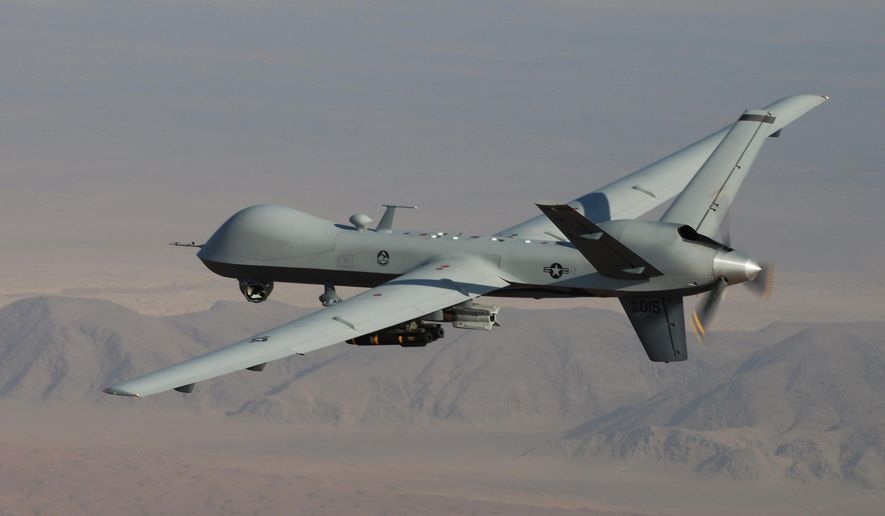Drones operated by the U.S. Air Force crashed in record numbers last year, with 20 unmanned aerial vehicles having been either completely destroyed or heavily damaged — each one costing at least $2 million, a new investigation revealed.
The number of Air Force drones that bit the dust during 2015 exceeded the previous year’s tally by more than double, The Washington Post reported on Wednesday, marking the worst year ever with respect to the branch’s use of unmanned aerial vehicles.
Ten of the 20 drones badly damaged as the result of crashes last year were of the Reaper variety, a 2.5-ton aircraft that’s among the American military’s most advanced, and previously saw five or fewer crashes during any given year, The Post added.
The remaining 10 incidents that occurred last year affected Predator drones, the Air Force’s next most commonly used unmanned aerial vehicle, according to documents obtained through Freedom of Information Act requests filed by The Post.
While drone mishaps have made headlines time and time again, The Post reported that only half of the 20 accidents that occurred last year were publicly disclosed by the Department of Defense, despite a Pentagon-wide policy that requires all major aircraft mishaps to be revealed.
Lt. Gen. Robert P. Otto, the Air Force’s deputy chief of staff for intelligence and surveillance programs, told The Post that the military was aware of the spike and was examining the incidents “to determine what is the core issue there.”
As The Post reported, however, previously unpublished documents suggest investigators have all but concluded that a fault starter-generator has been to blame for the Reaper crashes, although a fix has hardly been implemented: Most recently, a MQ-1 Predator drone operated by the Air Force crashed two weeks ago in Iraq.
“Any impact to operations has been negligible to barely noticeable,” Lt. Otto said of the 20 downed drones.
Meanwhile, last year saw the Air Force cutting down on the number of drone combat missions by 8 percent as the result of a pilot shortage, despite the Pentagon ramping up its efforts to counter the Islamic State in Iraq and Syria.
As of Wednesday, the U.S. now has legal authorities to pursue the group in Afghanistan, but a strict no-boots-on-the-ground policy has led to the U.S. military relying largely on aerial missions, including ones involving drones, to take down the terror group.
• Andrew Blake can be reached at ablake@washingtontimes.com.




Please read our comment policy before commenting.